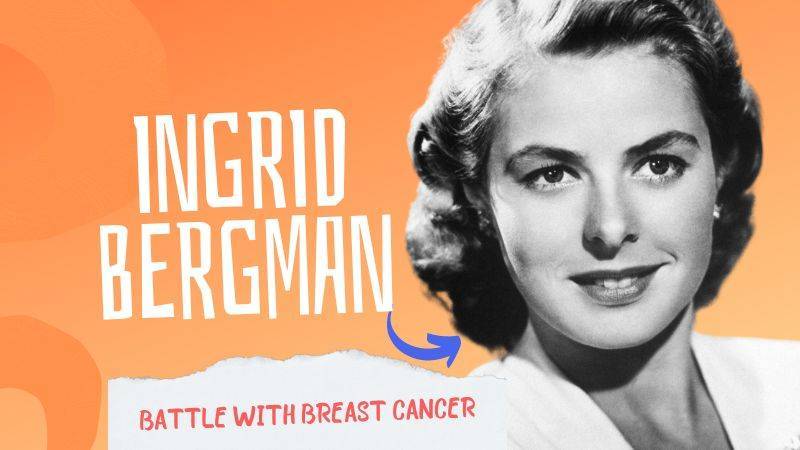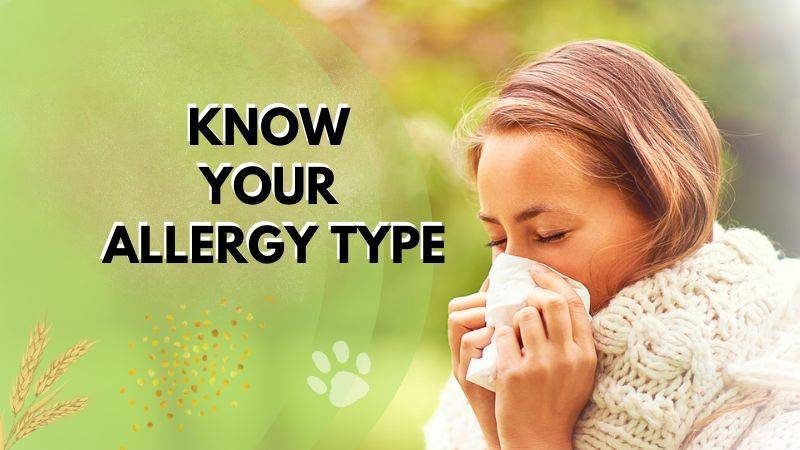Breast cancer is a formidable disease affecting millions of women, and occasionally men, worldwide.
Awareness and understanding of this disease are key to timely diagnosis and effective treatment.
This article uses the personal battle of iconic actress Ingrid Bergman with breast cancer as a lens to better understand and highlight the essential aspects of this disease.
Who was Ingrid Bergman?
Ingrid Bergman was a Swedish actress who commanded the global cinema stage with performances in classic films like “Casablanca,” “Notorious,” and “Gaslight,” for which she won her first of three Academy Awards.
Her radiant beauty and exceptional acting skills endeared her to audiences around the world. However, Bergman’s life was not without its trials.
In 1974, she was diagnosed with breast cancer, a battle she fought bravely until her passing in 1982.
Ingrid Bergman and Breast Cancer
Bergman’s diagnosis came at a time when breast cancer was less understood than it is today, and treatments were less sophisticated.
Despite the initial shock, Bergman faced the disease with courage and resolve, undergoing surgery and subsequent treatments.
Her journey sheds light on a key fact about breast cancer: It can affect anyone, regardless of fame, wealth, or lifestyle.
No one is immune, underscoring the importance of regular breast cancer screening and early detection, which significantly increases survival rates.
What is Breast Cancer?

Breast cancer starts when cells in the breast begin to grow out of control, forming a tumor that can often be seen on an x-ray or felt as a lump.
The tumor is malignant (cancerous) if the cells can grow into surrounding tissues or spread (metastasize) to distant areas of the body.
There are several types of breast cancer, and they are broken into two main categories:
- Invasive
- Non-invasive (or in situ)
Invasive breast cancer means the cancer cells have broken out of the duct or lobule and have the potential to spread.
Non-invasive breast cancer means the cancer is still confined to the place where it started.
While it’s not clear what type of breast cancer Ingrid Bergman had, the fact that she needed surgery suggests it might have been an invasive type.
However, every case is different and depends on numerous factors.
Warning Signs of Breast Cancer

Breast cancer can show up in different ways for different people.
Here are some things you might notice if you have breast cancer:
- Your breast might look or feel different, like being bigger or shaped differently.
- You might feel a small hard lump in your breast or under your arm. This lump can feel as small as a pea and doesn’t go away even after your period.
- The skin on your breast or around your nipple might look different. It could look like an orange peel, be red, or feel hard.
- There might be a part of your breast that feels different from the rest.
- You might find a hard area under your skin that feels like a marble.
- You could have some fluid coming out of your nipple. It might look like blood or be clear.
But remember, some people with breast cancer don’t see or feel anything different. That’s why it’s very important to have regular check-ups and mammograms.
Causes of Breast Cancer
Breast cancer happens when cells in your breast grow abnormally. Scientists don’t fully understand why this happens, but there are several things that can make you more likely to get breast cancer.
Here are some of them:
- Age: Being 55 or older can make you more likely to get breast cancer.
- Gender: Women are more likely to get breast cancer than men.
- Family and genes: If you have close family members who had breast cancer, you might be more likely to get it too. Some people inherit genes from their parents that make them more likely to get breast cancer.
- Smoking: Using tobacco can increase your chances of getting many types of cancer, including breast cancer.
- Alcohol: Drinking alcohol can also make you more likely to get some types of breast cancer.
- Being very overweight: If you’re very overweight, you might be more likely to get breast cancer or for it to come back after treatment.
- Exposure to radiation: If you’ve had radiation treatment, especially to your head, neck, or chest, you might be more likely to get breast cancer.
- Hormone replacement therapy: Some people who take hormones to manage menopause symptoms have a higher chance of getting breast cancer.
There might be other things that can increase your chances of getting breast cancer.
It’s a good idea to talk to your doctor to find out if you’re at risk.
Diagnosis and Tests

Your doctor will check your breasts and ask you about your health, your family’s health, and any symptoms you might have.
They might also want you to have some tests that can find abnormal areas in your breasts.
These tests might include:
- Mammogram: This is a special kind of x-ray that can find changes or lumps in your breast.
- Ultrasound: This test uses sound waves to create pictures of the inside of your breast. It’s used to help find out more about lumps or other unusual areas.
- PET Scan: This test uses a special dye to show areas that might be a problem. During the test, the dye is put into your veins, and then pictures are taken with a scanner.
- MRI: This test uses magnets and radio waves to create detailed pictures of the inside of your breast.
If your doctor sees something unusual in these tests, they might take a small piece of tissue from your breast to look at under a microscope. This is called a biopsy. The piece of tissue is sent to a lab to be checked for cancer cells.
Treatment
The best treatment for you depends on things like where the cancer is, how big it is, your test results, and if it has spread.
Here’s a bit more about these treatments:
Breast cancer surgery
This is when a doctor removes the part of your breast that has cancer and some healthy tissue around it. There are different kinds of surgeries:
- Lumpectomy: The doctor takes out the cancer and a small area of healthy tissue. Sometimes they also take out some lymph nodes, which are small glands that help your body fight infections.
- Mastectomy: The doctor removes all of your breast. Sometimes they can leave your nipple and the dark skin around it. After a mastectomy, you might choose to have surgery to rebuild your breast.
- Sentinel node biopsy: The doctor removes the first lymph node that the cancer would spread to. If this lymph node doesn’t have cancer, they might not need to remove any more.
- Axillary lymph node dissection: If many lymph nodes have cancer, the doctor might take them out.
- Modified radical mastectomy: The doctor removes all of your breast and nipple, as well as lymph nodes in your underarm. They don’t remove the muscles in your chest. After this surgery, you can choose to have surgery to rebuild your breast.
- Radical mastectomy: The doctor removes all of your breast, nipple, underarm lymph nodes, and chest wall muscles. This surgery is only done if the cancer has spread to your chest muscles. You can choose to have surgery to rebuild your breast after this surgery.
Chemotherapy for breast cancer
This is a type of medicine that kills cancer cells. You might get chemotherapy before surgery to make the tumor smaller, or after surgery to kill any leftover cancer cells.
If the cancer has spread, you might get chemotherapy as your main treatment.
Radiation therapy for breast cancer
This treatment uses high-energy waves to kill cancer cells. You usually get it after surgery to kill any remaining cancer cells.
It can also be used to treat tumors that have spread and are causing problems.
Hormone therapy for breast cancer
Some breast cancers grow because of hormones like estrogen and progesterone. Hormone therapy can lower the amount of estrogen in your body or stop estrogen from helping breast cancer cells grow.
You usually get it after surgery to lower the chance of the cancer coming back. But you might also get it before surgery to make the tumor smaller, or to treat cancer that has spread.
Immunotherapy for breast cancer
This treatment uses your body’s own defense system to attack breast cancer cells. You get it through a vein in your arm or hand.
You might get immunotherapy along with chemotherapy.
Targeted drug therapy for breast cancer
Some drugs can find and attack specific parts of cancer cells. Your doctor might recommend this treatment if the breast cancer has spread.
Some common drugs used in breast cancer treatment are called
- Monoclonal antibodies(like trastuzumab, pertuzumab and margetuximab)
- Antibody-drug conjugates(like ado-trastuzumab emtansine and fam-trastuzumab deruxtecan)
- Kinase inhibitors (lapatinib, neratinib and tucatinib).
Prevention
While there’s no surefire way to stop breast cancer, there are steps you can take to find it early before it spreads.
Here are some tips:
-
Get regular mammograms: Mammograms are a type of x-ray that can spot early signs of breast cancer. The American Cancer Society suggests getting a first mammogram at 35, and then one every year after you turn 40.
-
Check your breasts every month: Start doing this when you’re 20. By getting to know how your breasts normally feel, you’ll be able to spot any changes faster.
-
Get your breasts checked by a doctor: Do this at least once every three years starting at age 20, and every year after you turn 40. Doctors can often find lumps that mammograms might miss.
Higher Chance of Getting Breast Cancer
Being a woman is the biggest risk factor for breast cancer. While men can also get breast cancer, it’s quite rare and only happens to about 0.5-1% of all people with breast cancer.
The way doctors treat breast cancer is the same for both men and women.
There are also other things that can increase your chance of getting breast cancer, like:
- Getting older
- Being overweight
- Drinking too much alcohol
- Having a family member who had breast cancer
- Having been exposed to radiation before
- Certain aspects of your reproductive history, like when you started your period and when you had your first child
- Smoking
- Using hormone therapy after menopause
Around half of all women who get breast cancer don’t have any of these risk factors besides being a woman and being over 40 years old.
Even though having a family member with breast cancer can make you more likely to get it, most women who get breast cancer don’t have a known family history of the disease.
Just because you don’t have a family history of breast cancer doesn’t mean your risk is lower.
Some women have certain changes in their genes that make them much more likely to get breast cancer. The main ones are changes in the BRCA1, BRCA2, and PALB-2 genes.
Women who have these gene changes might think about ways to lower their risk, like having surgery to remove both breasts.
Importance of Early Detection
One crucial point we can take from Bergman’s story is the significance of early detection.
The American Cancer Society recommends women undergo regular screenings to detect breast cancer early. These screenings typically involve mammograms, which are x-ray pictures of the breast that can often detect tumors that are too small to feel.
Unfortunately, many women ignore the importance of regular screenings, which can be the difference between catching cancer in its early stages or later when it’s more advanced and less responsive to treatment.
Living with Breast Cancer
Ingrid Bergman continued to act even while undergoing treatment for cancer, showing that it is possible to lead an active and fulfilling life while battling the disease.
However, this fight is not easy and requires a strong support system, access to quality medical care, and a good understanding of the disease.
Conclusion
The story of Ingrid Bergman’s battle with breast cancer underscores the importance of awareness, regular screening, early detection, and treatment of this disease.
It’s a reminder that breast cancer can affect anyone and that we must do everything possible to fight it. While significant advances have been made in breast cancer research and treatment since Bergman’s time, the disease still poses a considerable threat, and ongoing awareness is crucial.
Together, we can make a difference.







